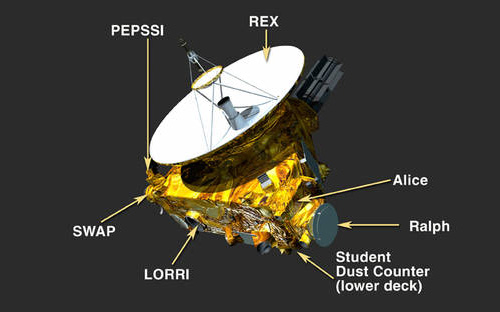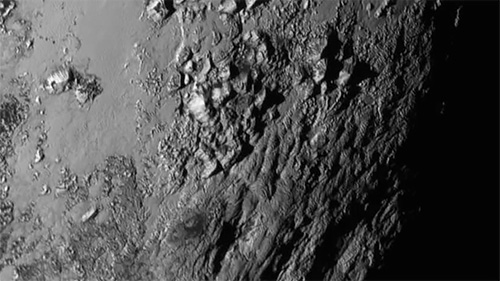Photo Corners headlinesarchivemikepasini.com
![]()
A S C R A P B O O K O F S O L U T I O N S F O R T H E P H O T O G R A P H E R
![]()
Enhancing the enjoyment of taking pictures with news that matters, features that entertain and images that delight. Published frequently.
Meet Ralph, The Camera That Shot Pluto




17 July 2015
Among the cameras aboard the New Horizons spacecraft that made history this week photographing Pluto, the one that captures visible light is called Ralph. He's accompanied by Alice, who is sensitive to ultraviolet light.

New Horizons. Credits: NASA/Johns Hopkins University Applied Physics Laboratory/Southwest Research Institute.
Ralph and Alice were The Honeymooners, a 1950s sitcom about the Kramdens, a young working-class married couple. "To the moon, Alice," Ralph would often promise to send her after she won yet another argument. She was, if we recall correctly, undefeated.
The Ralph and Alice on New Horizons have gone well beyond the moon. How they did it is quite a story, too.

Pluto. Icy but young mountains near Pluto's equator.
Robinson Meyer of The Atlantic sat down with Lisa Hardaway, the engineer at Ball Aerospace who led Ralph's technical development. In The Camera Behind the New Pluto Photos, he recounts their conversation.
SPECIFICATIONS
A few of the details from the story are worth highlighting:
- It uses a 75mm lens with a fixed f8.7 aperture.
- To survive shrinkage variations in the extreme cold, the entire camera was made of one material, aluminum (except for the glass in the lens). Even the mirrors, which were polished with diamonds.
- Its sensitivity had to capture a light level about that provided by a quarter moon on Earth.
- Consequently, its susceptibility to bright light meant the aperture wasn't opened until the spacecraft had approached Mars.
- Ralph had to be light (10.5 Kg) and use very little power (7.1 watts peak) to extend New Horizion's usefulness.
But wait, there's more:
- Ralph combines panchromatic and color imaging capabilities with IR imaging spectroscopy to map surface geology and composition but also for atmospheric studies and to map the surface temperature.
- Ralph uses seven independent CCD arrays on a single substrate, including two large format (5024x32 pixel) CCDs.
You can read more about Ralph in Ralph: A Visible/Infrared Imager for the New Horizons Pluto/Kuiper Belt Mission.
Or you can watch Ball Aerospace's short (and fascinating) video on Ralph:
There's a bit more about Ralph and what it captures in The Inside Story of How NASA Captures & Prepares Photos for Public Distributionby Jaron Schneider writing for Resource Magazine. Schneider interviews Robert Hurt who does a lot the post processing of the images, which is what the article primarily discusses.